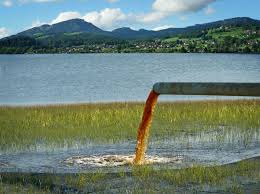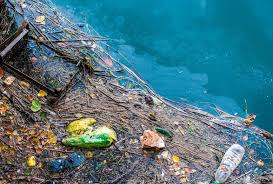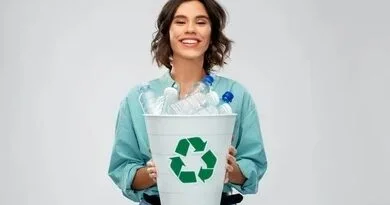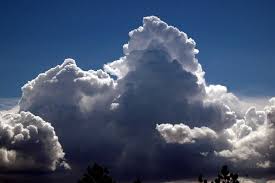Water Pollution Sources and Classifications
Water pollution occurs when a body of water is adversely affected due to the addition of large amounts of materials to the water. When it is unfit for its intended use, water is considered polluted.
Water Pollution is the contamination of streams, lakes, underground water, bays, or oceans by substances harmful to living things. Water is necessary to life on earth and all organisms contain it; some live in it; some drink it.
Pollution makes streams, lakes, and coastal waters unpleasant to look at, to smell, and to swim in. Fish and shellfish harvested from polluted waters may be unsafe to eat. People who ingest polluted water can become ill, and, with prolonged exposure, may develop cancers or bear children with birth defects.
Sources of Water pollutants
1. Point Source
This occurs when harmful substances are emitted directly into a body of water. An example of a point source of water pollution is a pipe from an industrial facility discharging effluent directly into a river.
Point-source pollution is usually monitored and regulated, at least in Western countries, though political factors may complicate how successful efforts are at true pollution control.
The technology exists for point sources of pollution to be monitored and regulated, although political factors may complicate matters.
2. Non point Source
Nonpoint source delivers pollutants indirectly through transport or environmental change. Nonpoint sources are much more difficult to monitor and control, and today they account for the majority of contaminants in streams and lakes.
Nonpoint sources are more difficult to recognize. Pollutants from these sources may appear a little at a time from large areas, carried along by rainfall or snowmelt.
For instance, the small oil leaks from automobiles that produce discolored spots on the asphalt of parking lots become nonpoint sources of water pollution when rain carries the oil into local waters or when fertilizer from a field is carried into a stream by rain, in the form of run-offs.
Most agricultural pollution is nonpoint since it typically originates from many fields. Pollution arising from nonpoint sources accounts for a majority of the contaminants in streams and lakes.
Classifying Water Pollution
The major sources of water pollution can be classified as municipal, industrial, and agricultural.
1. Municipal Water Pollution
Municipal water pollution consists of waste water from homes and commercial establishments. For many years, the main purpose of treating municipal wastewater was simply to reduce its content of suspended solids, oxygen-demanding materials, dissolved inorganic compounds, and harmful bacteria.
In recent years, however, more stress has been placed on improving means of disposal of the solid residues from the municipal treatment processes.

The basic methods of treating municipal wastewater fall into three stages: primary treatment, including grit removal, screening, grinding, and sedimentation; secondary treatment, which entails oxidation of dissolved organic matter by means of using biologically active sludge, which is then filtered off; and tertiary treatment, in which advanced biological methods of nitrogen removal and chemical and physical methods such as granular filtration and activated carbon absorption are employed
2. Industrial Water Pollution
The characteristics of industrial waste waters can differ considerably both within and among industries.
Read Also: Application of Biotechnology to Air and Water Pollution Control
The impact of industrial discharges depends not only on their collective characteristics, such as biochemical oxygen demand and the amount of suspended solids, but also on their content of specific inorganic and organic substances. Three options are available in controlling industrial wastewater.
Control can take place at the point of generation in the plant; wastewater can be pretreated for discharge to municipal treatment sources; or wastewater can be treated completely at the plant and either reused or discharged directly into receiving waters.
3. Agriculture Water Pollution
Agriculture, including commercial livestock and poultry farming, is the source of many organic and inorganic pollutants in surface waters and groundwater.
These contaminants include both sediment from erosion cropland and compounds of phosphorus and nitrogen that partly originate Agriculture, including commercial livestock and poultry farming, is the source of many organic and inorganic pollutants in surface waters and groundwater.
These contaminants include both sediment from erosion cropland and compounds of phosphorus and nitrogen that partly originate in animal wastes and commercial fertilizers.
Animal wastes are high in oxygen demanding material, nitrogen and phosphorus, and they often harbor pathogenic organisms. Wastes from commercial feeders are contained and disposed of on land; their main threat to natural waters, therefore, is from runoffs and leaching.
Control may involve settling basins for liquids, limited biological treatment in aerobic or anaerobic lagoons, and a variety of other methods.
In summary, clearly, the problems associated with water pollution have the capabilities of disrupting life on our planet to a great extent. Congress has passed laws to try to combat water pollution thus acknowledging the fact that water pollution is, indeed, a serious issue. But the government alone cannot solve the entire problem.
It is ultimately up to us, to be informed, responsible and involved when it comes to the problems we face with our water.
We must become familiar with our local water resources and learn about ways for disposing harmful household wastes so they do not end up in sewage treatment plants that can’t handle them or landfills not designed to receive hazardous materials.
In our yards, we must determine whether additional nutrients are needed before fertilizers are applied, and look for alternatives where fertilizers might run off into surface waters.
We have to preserve existing trees and plant new trees and shrubs to help prevent soil erosion and promote infiltration of water into the soil. Around our houses, we must keep litter, pet waste, leaves, and grass clippings out of gutters and storm drains.
These are just a few of the many ways in which we, as humans, have the ability to combat water pollution.
As we head into the 21st century, awareness and education will most assuredly continue to be the two most important ways to prevent water pollution. If these measures are not taken and water pollution continues, life on earth will suffer severely.
Global environmental collapse is not inevitable. But the developed world must work with the developing world to ensure that new industrialized economies do not add to the world’s environmental problems. Politicians must think of sustainable development rather than economic expansion.
Conservation strategies have to become more widely accepted, and people must learn that energy use can be dramatically diminished without sacrificing comfort. In short, with the technology that currently exists, the years of global environmental mistreatment can begin to be reversed.
Read Also : Recycling as a Method of Environmental Pollution Control
Water Pollution is the contamination of streams, lakes, underground water, bays, or oceans by substances harmful to living things. Point source pollution occurs when harmful substances are emitted directly into a body of water.
Nonpoint source pollution occurs when pollutants are indirectly introduced into the environment through transport or environmental change. Major water pollutants are chemical, biological, or physical materials.



